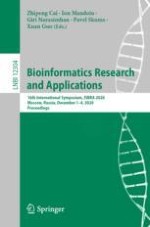2020 | OriginalPaper | Buchkapitel
TNet: Phylogeny-Based Inference of Disease Transmission Networks Using Within-Host Strain Diversity
verfasst von : Saurav Dhar, Chengchen Zhang, Ion Mandoiu, Mukul S. Bansal
Erschienen in: Bioinformatics Research and Applications
Aktivieren Sie unsere intelligente Suche, um passende Fachinhalte oder Patente zu finden.
Wählen Sie Textabschnitte aus um mit Künstlicher Intelligenz passenden Patente zu finden. powered by
Markieren Sie Textabschnitte, um KI-gestützt weitere passende Inhalte zu finden. powered by
